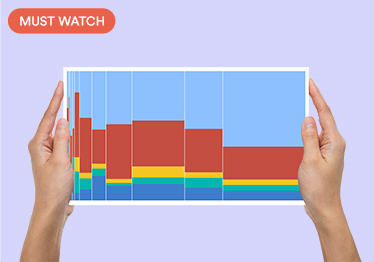

You've probably heard of Customer Satisfaction scores, which measure how satisfied customers were with their experience with your brand. You've also probably heard of the Net Promoter Score (NPS), which works by asking customers how likely they are to recommend your brand. But what's the practical difference between these two measures?
Customer Satisfaction Score
The Customer Satisfaction Score is calculated by conducting surveys which ask customers to rate how satisfied they were with their experience (or with a product or an attribute of a product). This is typically on a scale of 1-10, 1-5, or 1-3. The total score is often calculated using a Top 2 Box score, but can also be calculated by taking the average or median of all scores. The aim of customer satisfaction is to capture customer happiness with a specific interaction or experience.
Net Promoter Score (NPS)
By contrast, the NPS question asks respondents to rate how likely they are to recommend the brand or service to others. These answers are captured on an 11 point scale from 0-10. Respondents are then segmented into three groups, based on their responses:
- Detractors are those who respond between 0 and 6. They are unlikely to recommend your brand and may cause harm by sharing their negative experiences.
- Passives respond between 7 and 8. They like your brand, but don't love it, and are unlikely to rave about it.
- Promoters respond between 9 and 10. These are your brand advocates, who will hopefully keep returning to your brand and encourage their friends to go to you as well.
To calculate the NPS, the proportion of detractors is subtracted from the proportion of promoters. Any number between -100 (if there are no promoters) and 100 (if there are no detractors) is possible. By asking about a customer's intention of recommending a brand as a whole, rather than about their satisfaction with a particular interaction, NPS is designed to give a more holistic view than CSAT. Furthermore, the intention is to measure customer loyalty, rather than customer satisfaction. A high NPS score is thought to be correlated with increased customer retention and greater growth in revenue.
So they're completely different, right?
Well... kind of. Proponents of NPS claim that it is more correlated with customer loyalty than other metrics, and that it is more focused on long-term growth. This is because the NPS question asks about intention to recommend in the future, rather than focusing on current satisfaction. The difference that is usually drawn is that customer satisfaction is about current sentiment about an immediate interaction, and customer satisfaction is a more holistic view about loyalty to a brand.
Except... it probably isn't as clear-cut as that. In most situations, customer satisfaction and NPS rise and fall together. This is probably because most people interpret the NPS question and the customer satisfaction question in the same way. When asked either question by a company, people don't stop to analyze the deeper implications of either question. Rather, they interpret both questions as asking for their feedback on the brand and their experiences with it.
Customer satisfaction and NPS tend to be used by different organizations. Customer satisfaction tends to be used more by older organizations, while newer companies often prefer NPS. Part of this is due to the fact that an NPS score appears to have a clearer meaning than a customer satisfaction score. If a company has an NPS of 90, that means that company has far more promoters than detractors (yay!). However, if a company has a customer satisfaction score of 9, what does that mean in a concrete sense?
Ultimately, whether to measure customer satisfaction, NPS, both, or neither comes down to a particular company's goals, business model, and preferences.




